
The University of Puget Sound is a private liberal arts college in Tacoma, Washington. It was founded in 1888. The institution offers a variety of undergraduate degrees as well as five graduate programs in counseling, education, occupational therapy, physical therapy, and public health.
Two conflicting perspectives exist for the early history of Seattle. There is the "establishment" view, which favors the centrality of the Denny Party, and Henry Yesler. A second, less didactic view, advanced particularly by historian Bill Speidel and others such as Murray Morgan, sees David Swinson "Doc" Maynard as a key figure, perhaps the key figure. In the late nineteenth century, when Seattle had become a thriving town, several members of the Denny Party still survived; they and many of their descendants were in local positions of power and influence. Maynard was about ten years older and died relatively young, so he was not around to make his own case. The Denny Party were generally conservative Methodists, teetotalers, Whigs, and Republicans, while Maynard was a drinker and a Democrat. He felt that well-run prostitution could be a healthy part of a city's economy. He was also on friendly terms with the region's Native Americans, while many of the Denny Party were not. Thus Maynard was not on the best of terms with what became the Seattle Establishment, especially after the Puget Sound War. He was nearly written out of the city's history until Morgan's 1951 book Skid Road and Speidel's research in the 1960s and 1970s.

Asa Shinn Mercer was the first president of the Territorial University of Washington and a member of the Washington State Senate.

The third USS Woodbury (DD-309) was a Clemson-class destroyer in the United States Navy. She was named for Levi Woodbury.
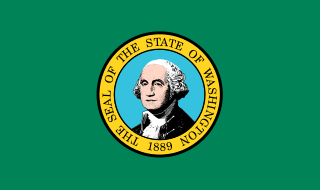
The history of Washington includes thousands of years of Native American history before Europeans arrived and began to establish territorial claims. The region was part of Oregon Territory from 1848 to 1853, after which it was separated from Oregon and established as Washington Territory following the efforts at the Monticello Convention. On November 11, 1889, Washington became the 42nd state of the United States.

The Puget Sound War was an armed conflict that took place in the Puget Sound area of the state of Washington in 1855–56, between the United States military, local militias and members of the Native American tribes of the Nisqually, Muckleshoot, Puyallup, and Klickitat. Another component of the war, however, were raiders from the Haida and Tlingit who came into conflict with the United States Navy during contemporaneous raids on the native peoples of Puget Sound. Although limited in its magnitude, territorial impact and losses in terms of lives, the conflict is often remembered in connection to the 1856 Battle of Seattle and to the execution of a central figure of the war, Nisqually Chief Leschi. The contemporaneous Yakima War may have been responsible for some events of the Puget Sound War, such as the Battle of Seattle, and it is not clear that the people of the time made a strong distinction between the two conflicts.

Edmond Stephen Meany was a professor of botany and history at the University of Washington (UW). He was an alumnus of the university, having graduated as the valedictorian of his class in 1885 when it was the Territorial University of Washington. Meany also earned a Master of Science from the University of Washington in 1899, and a Master of Letters from the University of Wisconsin in 1901.
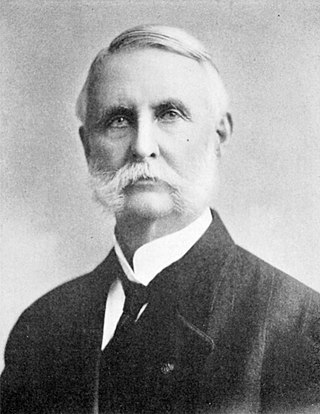
George Kinnear was an early Seattle real estate developer, responsible for some of the early residential development of Queen Anne Hill. He also had a brief military career.

Lake Washington steamboats and ferries operated from about 1875 to 1951, transporting passengers, vehicles and freight across Lake Washington, a large lake to the east of Seattle, Washington. Before modern highways and bridges were built, the only means of crossing the lake, other than the traditional canoe or rowboat, was by steamboat, and, later, by ferry. While there was no easily navigable connection to Puget Sound, the Lake Washington Ship Canal now connects Lake Washington to Lake Union, and from there Puget Sound is reached by way of the Hiram M. Chittenden Locks.

The PS Eliza Anderson operated from 1858 to 1898 mainly on Puget Sound, the Strait of Georgia, and the Fraser River but also for short periods in Alaska. She was generally known as the Old Anderson and was considered slow and underpowered even for the time. Even so, it was said of her that "no steamboat ever went slower and made money faster." She played a role in the Underground Railroad and had a desperate last voyage to Alaska as part of the Klondike Gold Rush.

Hiram Burnett was a well-known pioneer of the Puget Sound country, and an honored citizen of Seattle.

Judge Thomas Mercer was a pioneer associated with the early history of Seattle. Seattle's Mercer Street and Mercer Island in Lake Washington bear his name.

The Puget Sound region is a coastal area of the Pacific Northwest in the U.S. state of Washington, including Puget Sound, the Puget Sound lowlands, and the surrounding region roughly west of the Cascade Range and east of the Olympic Mountains. It is characterized by a complex array of saltwater bays, islands, and peninsulas carved out by prehistoric glaciers.
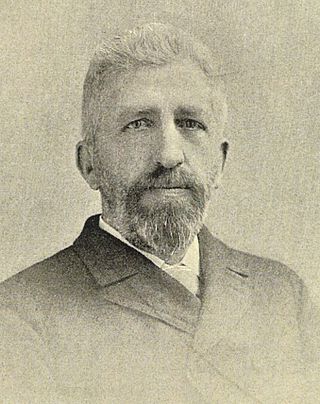
Jacob Furth was an Austrian Empire-born American entrepreneur and prominent Seattle banker. He played a key role in consolidating Seattle's electric power and public transportation infrastructure, and was a member of Ohaveth Sholum Congregation, Seattle's first synagogue. Bill Speidel called him "the city's leading citizen for thirty years," adding that Furth "may even have been the most important citizen Seattle ever had."

Francis Xavier Prefontaine was a French Canadian Catholic priest and missionary, an early resident in the pioneer days of Seattle, Washington, and a figure in the history of Seattle and the Puget Sound region of Washington State. He was Seattle's first resident Catholic priest and built the city's first Catholic church.
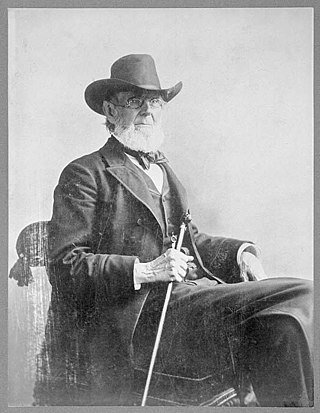
Beriah Brown was a newspaper publisher and politician who served as Mayor of Seattle, Washington, as well as a regent for both the University of Wisconsin–Madison and the University of Washington.
The following is a timeline of the history of the city of Seattle, Washington, USA.
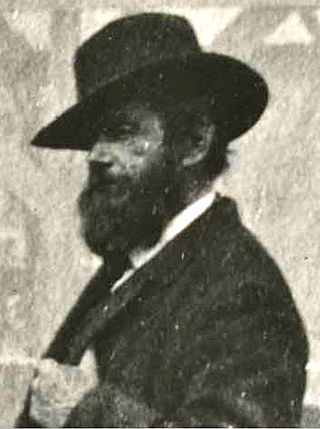
A. W. Piper was a Seattle, Washington pioneer whose name was given to Piper Orchard, Pipers Creek and Piper's Canyon in Carkeek Park, and who was elected in 1877–1878 a socialist Seattle City Council member. He owned a bakery known for its artistic confections that served Seattle and the Puget Sound region.

Mary Elizabeth Ordway, an early advocate for women's suffrage in Washington territory, was one of the first group of young women recruited to become teachers and wives in pioneer Seattle in the 1860s. Despite the expectation that these "Mercer Girls" would marry, Ordway remained single and became a successful teacher, school administrator, and suffrage activist. The suffrage activism of Ordway and some of the other "Mercer Girls" reflected their educational levels, professional status, and the values associated with personal autonomy that promoted their decisions to migrate across the continent to build new lives.
Clara Stanwood Pearson was an American pioneer in the Washington Territory and the eponym of the town of Stanwood.

















